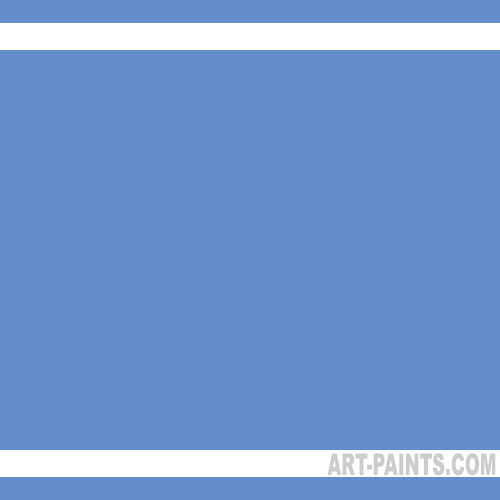Aquamarine is the birthstone associated with March.
This stone has a rather narrow color range that varies from pale blue to a green-blue tint.
It’s also a symbol of perception, hope, courage, creativity and beauty.
Those are certainly great symbols for any aspiring artist.
When you think of the color aquamarine, you may immediately picture a Caribbean sea. That’s a pretty good vision, as the warm waters surrounding this chain of islands can vary from a pale, almost invisible blue to a deep turquoise green as you gaze across the watery expanse.
An Aquamarine Palette
So let’s take a closer look at all the different shades and hues of Aquamarine…
Cerulean Blue
Cerulean Blue is an opaque, organic pigment that is composed of Cobalt Oxide and Chromium. It has a fairly low tinting strength but is very lightfast, so it is quite stable.
Right out of the tube, this hue sings with a vivid, perky tint that works well for seascapes. This beautiful, mid-range blue is also known as Cobalt Turquoise and Shepard Blue.
Cobalt Blue
Cobalt Oxide and Aluminum Oxide are combined to produce Cobalt Blue. This mineral-based pigment has a grainy appearance and is semitransparent. Due to differences in grinding and mixing techniques, the appearance and performance of this hue may vary among manufacturers.
This extremely lightfast and stable pigment was developed in 1802, but cobalt salts have been used to color glass and ceramics for hundreds of years.
Cobalt Turquoise
Another member of the Cobalt family, this opaque pigment leans more towards the green end of the spectrum. Think of the blue-green waters of a quiet cove or the changing spectrum of colors as the sea depths change in a wide-ranging view of the ocean.
Like its relatives, this hue is also opaque and very lightfast. The mineral sources for cobalt are toxic to inhale or digest, so don’t chew on your paintbrush when using these colors.
Light Turquoise Phthalo
This greenish turquoise is a combination of Phthalo Green and Phthalo Blue. The soft hue is completely lightfast and stable. It doesn’t pose any significant health hazards and is very permanent.
Light Turquoise Phthalo is a very vivid, high power color, so a little goes a long way. It’s semi-transparent and has a high tinting strength.
Phthalo Green (Blue Shade)
Phthalo Green (Blue Shade) is a very vivid blue-green that is intense and bright. A synthetic, chemical compound, this color was developed in 1935 and is used in dyes and paints.
The pigment is very lightfast and has a high tinting power, so it’s a popular choice on many artists’ palettes. The bright, cool tone works well with both marine paintings and landscapes, as it blends well as both a water shade and a color choice for foliage.
When you’re thinking of adding new blue hues to your tabouret, consider the many facets of the aquamarine. You’ll find the cool, soft colors appealing additions to landscapes, seascapes and a useful supplement for both your blue and green color palette.




